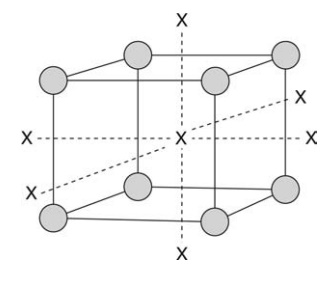Factorial Design
| Home | | Pharmaceutical Technology |Chapter: Pharmaceutical Engineering: Statistical Experimental Design
The effects of a number of different factors are explored simultaneously in factorial designs.
FACTORIAL DESIGN
The
effects of a number of different factors are explored simultaneously in
factorial designs. The treatment consists of all combinations that can be
formed from the different factors. The simplest case is one in which each
factor is considered at two levels. This is described as a 2n
factorial design. For example, a simple spray drying process requires
consideration of input solution concen-tration and flow rate, airflow rate, and
temperature, four factors. If each factor is studied at a high and low level,
then this is described as a 24 factorial design.
The
advantages of factorial experiments relate to their purpose. The intent is
frequently to investigate the effects of each factor over some preassigned
range that is covered by the levels of that factor, and not specifically to
discover the combination of factors that results in the maximum or minimum
response. Where the factors are independent, the statistical analysis is
straightforward. However, where the factors are not independent there this
additional infor-mation is to be gained through confounding analysis.
Factorial
experiments are useful for exploratory experiments where the objective is rapid
determination of the effects of a number of factors over a designated range;
investigations of interactions among effects of several factors, all
combinations of factors give the most information in this regard; experiments
designed to lead to recommendations over a broad range of conditions. Where the
objective is the latter recommendations, subsidiary factors may be brought into
an experiment to test the principal factors under various conditions to those
that are encountered in the population to which recommendations are to apply.
Fractional Factorial Design
Often
full factorial designs are beyond the resources of the investigator, or the
level of precision obtained is substantially higher than required. In a 26
factorial design, each main effect is an average of 32 combinations of other
factors. It is possible that it would be sufficient to conduct a four- or
eightfold replication and a partial experiment might be considered. Information
is lost in this approach to experiments in particular with respect to
interactions between factors.
There
are hazards associated with this approach. The results of such experiments may
be misinterpreted, particularly if the interactions that have been assumed to
be negligible are not. The impact of this problem depends on decisions made
from the results. In a screening study this may not have a huge impact where
the implications for a fundamental research program could be very serious. In
general, it is unadvisable to rely heavily on fractional factorial design as a
tool for investigation unless the risk of being misled by the occur-rence of
factor interactions is considered small.
Central Composite Design
The
designs above consider linear (first-order) relationships between levels of
particular factors. However, the relationships between levels of factors may be
related through nonlinear functions, the simplest of which is a quadratic

FIGURE 18.1 Central composite design (CCD)
based on three factors (x, y, z axes). O, factorial design factor combinations;
X, additional orthogo-nal factor combinations to complete the CCD.
response surface
(second order) that can emerge from central composite designs (CCDs) based on
factorial analysis. CCDs test additional factor combinations. CCD can be fitted
into a sequential program of experimentation. The experiment starts with an
exploratory 2n factorial design to which a linear response surface
is fitted. If the center of the first experiment is close to a point of maximum
response, combinations of factors can be selected orthogonally to one of the
original factorial designs to indicate the curvature of the response surface.
Figure 18.1 illustrates the way factor combinations would be selected.
Related Topics
